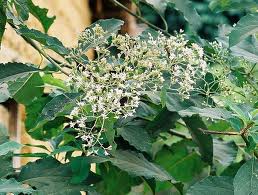Haematological effects of aqueous extract of Vernonia amygdalina in wistar rats
Keywords:
Lymphocytes, Neutrophils, Packed cell volume, Red cells, V. amygdalina, White blood cellsAbstract
The present study assessed the haematological effects of aqueous extract of (Vernonia amygdalina) in wistar rats. Fifteen (15) adult Wistar rats were used in this study. The animals were divided into three groups of five rats each. Group 1: were given 1ml of distilled water and served as the control, Group 2: received 250mg/kg b w of V. amygdalina and Group 3: received 500mg/kg b w of V. amygdalina orally once daily for a period of twenty one days. A day after the last treatment the tail end of rats were disinfected using cotton wool soaked in methylated spirit and blood sample was collected for determination of haematological indices The result obtained from this study showed that V. amygdalina at all doses administered to animals produced no significant change (p>0.05) on the blood levels of red cell count, packed cell volume and total white blood cell count when compared to the control group. On the other hand, treatment of the animals with 250 and 500 mg/kg b w of V. amygdalina caused significantly decreased (p<0.05) blood level of neutrophil count when compared to the control group. However, V. amygdalina at tested doses of 250 and 500mg/kg b w produced a significantly increased (p<0.05) blood levels of lymphocyte, basophil, eosinophil and monocyte counts with a non significant change (p>0.05) observed only on the blood level of monocyte count at tested dose of 250mg/kg b w of V. amygdalina when compared to control group. In conclusion, the present work showed that aqueous extract of V. amygdalina produced significant effect on the differential white blood cell count especially on the blood level of lymphocyte count.However, the plant extract did not produce erythropoietic effects; hence the non significant effect observed on the red cells count and packed cell volume respectively.References
Austin, C.C.,Perkins, S.L., 2006. “Parasites in a biodiversity hotspot: a survey of hematozoa and a molecular phylogenetic analysis of Plasmodium in New Guinea skinks”. J. Parasitol., 92(4), 770-7.
Bonsi, G.O., Lessen, W.A., Burda, S., Jurszsta, M., 1995. Nutritional assessment of Vernonia amygdalina leave in growing mice. J. Agric. food chem., 43, 2162-2166.
Brinski, D.A., 2000. Medical plants and phytomedicine, linking plant biochemistry and physiology to human health. J. plant physi., 24, 509-514
Cheeke, P.R.,Shull, L.R.,1999. Natural toxicants in feeds and poisonous plants. Westport, Conn, AVI Publishing New York. 34-37.
Dacie, J.V., Lewis, S.,2008. Basic hematological techniques in: Text book of Practical hematology, 10th ed. Churchill livingstone., 50-56.
extracts singly and in combination with chloroquine. Phytoth. Resour., 18, 379-384
Izevbigie, E.B., Bryant, J.L., Walker, A., 2004. Narural Inhibitor of Extracellular Signal Regulated Kinases and Human Breast Cancer Cells. Experimen. Bio. Med., 229, 163-169.
Izevbigie, E.B., 2003. Discovery of water-soluble anticancer agent (Etidotes) from a vegetable found in Benin City, Nigeria. Exp. Biol. Med., 228, 293-248.
Jisaka, M., Kawanaka, M., Sugiyama, H., Takegawa, K., Huffman, M.A., Ohigashi, H., Koshimizu, K., 1999. Antischistosomal activities of sesquiterpene lactones and steroid glucosides from Vernonia amygdalina, possibly used by wild chimpanzees against parasite-related diseases. Biosci. Biotech. Biochem. J., 56, 845 846.
Kaufman, P.B., Cseke, L.J., Warber, S. Duke, J.A., 1999. Natural products from plants. CRC Press, Boca Raton, Florida.
Magalhaes, P., Appell, H., Duarte, J., 2008. Involvement of advanced glycation end products in the pathogenesis of diabetes complication: the protective role of regular physical activity. Eur. Rev. Aging Phys. Act., 5(1), 17-29.
Nwanjo, H.U., 2005. Efficacy of aqueous leaf extract of vernonia amygdalina on plasma lipoprotein and oxidative status in diabetic rat models. Nigerian J. Phys. Sci., 20(1-2), 30-42.
Ologunde, B.O., Akinpelu, D., Aregheoro, E.M., (1999). Antimicrobial activity of Vernonia amygdalina leaves. Fitoterapia J. stud. Med. Plant., 70,432.
Oyedeji K.O., Bolarinwa A.F, Akintola A.M., 2013. Effect Of Methanolic Extract of Vernonia Amygdalina on Haematological and Plasma Biochemical Parameters in Male Albino Rats. J. Dental Med. Sci., 3(5), 64-67.
Oyedemi S.O., Adewusi, E.A., Aiyegoro, O.A., Akinpelu, D.A., 2011. Antidiabetic and haematological effect of aqueous extract of stem bark of Afzelia africana (Smith) on streptozotocin-induced diabetic Wistar rats. Asian Pacific J. Trop. Biomed., 353-358.
Polenakovic M., Sikole A., 1996. Is erythropoietin a survival factor for red blood cells? J. Am. Soc. Nephrol., 7(8), 1178-1182.
Sweeney, C.J., Mehrotra, S., Sadaria, M.R., Kumar, S., Shortle, N.H., Roman, Y., Sheridan, C., Campbell, R.A., Murray, D.J., Badve, S., Nakshatri, H., 2005. The sesquiterpene lactone parthenolide in combination with docetaxel reduces metastasis and improves survival in a xenograph model of breast cancer. Molecul. Can. Therap., 4(6), 1004.

Published
How to Cite
Issue
Section
Copyright (c) 2013 J.A. Tende, E.D. Eze, Y.A. Tende

This work is licensed under a Creative Commons Attribution-NonCommercial-NoDerivatives 4.0 International License.



